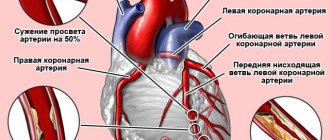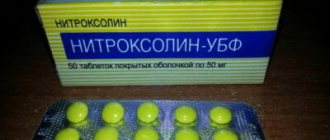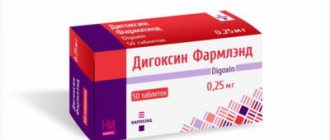Mabthera, with the international name rituximab, is the first medicine that has significantly increased the effectiveness of treatment of non-aggressive, and therefore insensitive to chemotherapy, non-Hodgkin lymphomas. Today, Mabthera is actively used for severe forms of some autoimmune diseases.
- Compound
- pharmachologic effect
- Indications and contraindications
- Side effects
- Overdose
- Storage conditions
- Best before date
- Release form
- Dosage
- Analogs
pharmachologic effect
The drug’s task is to attach to the CD20 receptor on the surface of a malignantly altered lymphocyte, depriving it of the ability to function normally. Lymphoma cells do not try to repair the damage caused by MAB, but die.
Among B lymphomas, only 5% do not have the CD20 receptor, so when encountering a drug, the likelihood of killing malignant B lymphocytes is very high. There is no such antigen on the hematopoietic cells in the bone marrow, from which normal B-lymphocytes develop, so hematopoiesis continues and over time, completely normal lymphocytes appear instead of dead malignant ones.
Indications and contraindications
MAB has limited use - only for malignant processes that have a specific receptor antigen, which is detected before the start of chemotherapy. The CD20 receptor is present in most cells of low-grade large B-cell and follicular non-Hodgkin's lymphomas, as well as chronic lymphocytic leukemia.
Antitumor therapy is started with a combination of MabThera with cytostatics; when remission is achieved, a two-year maintenance treatment is carried out; in case of relapse, the medicine is also effective.
In recent years, severe autoimmune diseases - rheumatoid arthritis and Wegener's granulomatosis - have been added to the spectrum of action of biological drugs.
The drug cannot be used in the absence of CD20; it is not only useless, but also fraught with immune complications.
Refusal to use rituximab in case of immune deficiency of any nature, as well as an insufficient number of blood cells. And a general contraindication for all chemotherapy options is infectious and inflammatory processes, pregnancy and breastfeeding.
Release form and composition
Mabthera is available in the following forms:
- Concentrate for the preparation of solution for infusion 100 and 500 mg: colorless or light yellow, transparent or slightly opalescent (100 mg - 10 ml in glass bottles, 2 bottles in a cardboard box; 500 mg - 50 ml in glass bottles, 1 bottle in a cardboard box);
- Solution for subcutaneous administration: colorless or yellowish, transparent or opalescent (11.7 ml in glass bottles, 1 bottle in a cardboard box).
The active ingredient is rituximab (10 mg in 1 ml of concentrate for the preparation of a solution for infusion; 120 mg in 1 ml of a solution for subcutaneous administration).
Auxiliary components of the concentrate: sodium citrate dihydrate, sodium chloride, polysorbate 80, sodium hydroxide or hydrochloric acid (up to pH = 6.5), distilled water - up to 1 ml.
Auxiliary components of the solution: recombinant human hyaluronidase, L-histidine hydrochloride monohydrate, L-histidine, L-methionine, α,α-trehalose dihydrate, polysorbate 80, distilled water - up to 1 ml.
Side effects
The drug causes a long-term decrease in the level of B-lymphocytes, in some cases up to 2 years, on average from six months to a year.
During administration, due to the release of cytokines, an acute immune reaction develops with swelling of the skin and mucous membranes, cough due to bronchospasm, lacrimation and runny nose, fever with chills, therefore, before each dropper, medicinal preparation is carried out - premedication, which reduces the severity of the syndrome. Gradually, the intensity of the cytokine release syndrome decreases.
In chronic lymphocytic leukemia with high sensitivity to chemotherapy, massive death of tumor cells is possible - tumor lysis syndrome. Dead cells clog the kidneys, causing fatal kidney failure. To avoid the development of a life-threatening syndrome, special drug preparation begins 2 days before the drip, which continues after the course.
After the course, bronchitis often develops, every third person develops infections or inflammatory processes due to a decrease in the immune elements of the blood; if Mabthera is combined with cytostatics, the severity and duration of adverse reactions increases.
Mabthera
Determination of the frequency of adverse reactions: very often (≥10%), often (≥1%-<10%), infrequently (≥0.1%-<1%).
Experience in using the drug for oncohematological diseases
The safety profile of MabThera® in the dosage form of solution for subcutaneous administration is comparable to the safety profile of MabThera® in the dosage form of concentrate for solution for infusion. With subcutaneous administration, local skin reactions, including reactions at the injection site, were very common and included pain, swelling, induration, bleeding, erythema, itching and rash. In most cases, the events were mild or moderate in severity.
There were no cases of anaphylaxis or severe hypersensitivity reactions, cytokine release syndrome or tumor lysis syndrome when using MabThera® solution for subcutaneous administration in clinical studies.
Reactions observed with intravenous administration of MabThera® in the dosage form concentrate for the preparation of solution for infusion
MabThera® for the treatment of low-grade or follicular non-Hodgkin's lymphoma - monotherapy/maintenance therapy
Adverse reactions were reported up to 12 months after monotherapy and up to 1 month after MabThera maintenance therapy.
Infectious and parasitic diseases: very often - bacterial and viral infections; often - respiratory tract infections*, pneumonia*, sepsis, herpes zoster*, infections accompanied by fever*, fungal infections, infections of unknown etiology.
From the hematopoietic system: very often - leukopenia, neutropenia; often - thrombocytopenia, anemia; uncommon - lymphadenopathy, bleeding disorder, transient partial aplastic anemia, hemolytic anemia.
From the respiratory system: often - rhinitis, bronchospasm, cough, respiratory diseases, shortness of breath, chest pain; uncommon - hypoxia, impaired pulmonary function, bronchiolitis obliterans, bronchial asthma.
From the immune system: very often - angioedema; often - hypersensitivity reactions.
Metabolism and nutrition: often - hyperglycemia, weight loss, peripheral edema, facial edema, increased LDH activity, hypocalcemia.
General reactions: very often - headache, fever, chills, asthenia; often - pain in tumor foci, flu-like syndrome, hot flashes, weakness; Uncommon: pain at the injection site.
From the digestive system: very often - nausea; often - vomiting, diarrhea, dyspepsia, lack of appetite, dysphagia, stomatitis, constipation, abdominal pain, sore throat; infrequently - abdominal enlargement.
From the cardiovascular system: often - decreased blood pressure, increased blood pressure, orthostatic hypotension, tachycardia, arrhythmia, atrial fibrillation*, myocardial infarction*, cardiac pathology*; uncommon - left ventricular heart failure*, ventricular and supraventricular tachycardia*, bradycardia, myocardial ischemia*, angina*.
From the nervous system: often - dizziness, paresthesia, hypoesthesia, sleep disturbance, anxiety, agitation, vasodilation; infrequently - perversion of taste.
From the mental side: infrequently - nervousness, depression.
From the musculoskeletal system: often - myalgia, arthralgia, muscle hypertonicity, back pain, pain in the neck.
From the skin and subcutaneous tissues: very often - itching, rash; often - urticaria, increased sweating at night, sweating, alopecia*.
On the part of the organ of vision: often - impaired lacrimation, conjunctivitis.
On the part of the organ of hearing and balance: often - pain and tinnitus.
From the laboratory parameters: very often - a decrease in the concentration of immunoglobulin G (IgG).
*frequencies are indicated only for adverse reactions of ≥3 severity in accordance with the National Cancer Institute toxicity criteria (NCI-CTC).
MabThera® in combination with chemotherapy (CHOP, CVP, FC) for non-Hodgkin's lymphoma and chronic lymphocytic leukemia
The following are severe adverse reactions in addition to those observed with monotherapy/maintenance therapy and/or occurring at a higher frequency.
Infectious and parasitic diseases: very often - bronchitis; often - acute bronchitis, sinusitis, hepatitis B* (reactivation of the hepatitis B virus and primary infection).
From the hematopoietic system: very often - neutropenia**, febrile neutropenia, thrombocytopenia; often - pancytopenia, granulocytopenia.
From the skin and subcutaneous tissues: very often - alopecia; often - skin diseases.
General reactions: often - fatigue, chills.
*frequency is indicated based on observations during the treatment of relapsed/chemoresistant chronic lymphocytic leukemia according to the R-FC regimen (rituximab, fludarabine, cyclophosphamide).
** Prolonged and/or delayed neutropenia has been observed after completion of R-FC therapy in previously untreated patients or in patients with relapsed/chemoresistant chronic lymphocytic leukemia.
The following are adverse events that occurred during MabThera therapy with the same frequency (or less frequently) compared to the control group: hematotoxicity, neutropenic infections, urinary tract infections, septic shock, pulmonary superinfections, implant infections, staphylococcal septicemia, mucous nasal discharge, pulmonary edema, heart failure, sensory disturbances, venous thrombosis, incl. deep vein thrombosis of the extremities, mucositis, edema of the lower extremities, decreased left ventricular ejection fraction, increased body temperature, deterioration of general health, fall, multiple organ failure, bacteremia, decompensation of diabetes mellitus.
The safety profile of MabThera in combination with chemotherapy regimens MCP, CHVP-IFN does not differ from that in combination with CVP, CHOP or FC in relevant populations.
Reactions associated with drug administration
Monotherapy with MabThera® (for 4 weeks)
More than 50% of patients experienced events resembling infusion reactions, most often during the first infusions. Infusion reactions include chills, trembling, weakness, shortness of breath, nausea, rash, hot flashes, low blood pressure, fever, itching, urticaria, irritation of the tongue or swelling of the larynx (angioedema), rhinitis, vomiting, pain in tumor areas, headache , bronchospasm. The development of signs of tumor lysis syndrome has been reported.
MabThera® in combination with chemotherapy according to the following regimens: R-CVP (rituximab, cyclophosphamide, vincristine, prednisolone) for non-Hodgkin's lymphoma; R-CHOP (rituximab, cyclophosphamide, doxorubicin, vincristine, prednisolone) for diffuse large B-cell non-Hodgkin lymphoma
Grade 3 and 4 infusion reactions during infusion or within 24 hours after infusion of MabThera® were observed during the first cycle of chemotherapy in 12% of patients. The incidence of infusion reactions decreased with each subsequent cycle and by the 8th cycle of chemotherapy, the incidence of infusion reactions was less than 1%. Infusion reactions, in addition to those mentioned above (with monotherapy with MabThera®), included: dyspepsia, rash, increased blood pressure, tachycardia, signs of tumor lysis syndrome, in some cases - myocardial infarction, atrial fibrillation, pulmonary edema and acute reversible thrombocytopenia.
Infections
Monotherapy with MabThera® (for 4 weeks)
MabThera® causes depletion of the B cell pool in 70-80% of patients and a decrease in serum immunoglobulin concentrations in a small number of patients. Bacterial, viral, fungal infections and infections of unspecified etiology (all, regardless of cause) develop in 30.3% of patients. Severe infections (grades 3 and 4), including sepsis, were noted in 3.9% of patients.
Maintenance therapy (non-Hodgkin's lymphoma) up to 2 years
During therapy with MabThera®, an increase in the overall incidence of infections was observed, incl. infections of 3-4 severity. There was no increase in the incidence of infectious complications with maintenance therapy lasting 2 years. Fatal progressive multifocal leukoencephalopathy (PML) has been reported in patients with non-Hodgkin's lymphoma after disease progression and re-treatment.
MabThera® in combination with chemotherapy according to the following regimens: R-CVP for non-Hodgkin's lymphoma; R-CHOP for diffuse large B-cell non-Hodgkin lymphoma
There was no increase in the incidence of infections or infestations with MabThera® R-CVP regimen. Upper respiratory tract infections were most common (12.3% in the R-CVP group). Serious infections occurred in 4.3% of patients receiving R-CVP chemotherapy; No life-threatening infections were reported. The proportion of patients with grade 2-4 infections and/or febrile neutropenia in the R-CHOP group was 55.4%. The total incidence of grade 2-4 infections in the R-CHOP group was 45.5%. The incidence of grade 2-4 fungal infections in the R-CHOP group was higher than in the CHOP group due to a higher incidence of local candidiasis and amounted to 4.5%. The incidence of grade 2-4 herpes infection was higher in the R-CHOP group compared to the CHOP group and amounted to 4.5%.
From the hematopoietic system
Monotherapy with MabThera® (for 4 weeks)
Severe thrombocytopenia (grade 3 and 4) was observed in 1.7% of patients, severe neutropenia - in 4.2% of patients, severe anemia (grade 3 and 4) - in 1.1% of patients.
Maintenance therapy (non-Hodgkin's lymphoma) up to 2 years
Leukopenia (grades 3 and 4) was observed in 5% of patients, neutropenia (grades 3 and 4) - in 10% of patients receiving MabThera®. The incidence of thrombocytopenia (grade 3-4) during therapy with MabThera was low and amounted to <1%.
Approximately 50% of patients for whom B-cell recovery data were available took 12 months or more to recover B-cell counts to normal levels after completion of induction therapy with MabThera.
MabThera® in combination with chemotherapy according to the following regimens: R-CVP for non-Hodgkin's lymphoma; R-CHOP for diffuse large B-cell non-Hodgkin lymphoma
Severe neutropenia and leukopenia (grades 3 and 4): in patients receiving MabThera® in combination with chemotherapy, leukopenia of grades 3 and 4 was observed more often compared to patients receiving chemotherapy alone. The incidence of severe leukopenia was 88% in patients receiving R-CHOP. The incidence of severe neutropenia was 24% in the R-CVP group, 97% in the R-CHOP group. The higher incidence of neutropenia in patients receiving MabThera and chemotherapy was not associated with an increased incidence of infections and infestations compared with patients receiving chemotherapy alone.
Severe anemia and thrombocytopenia (grades 3 and 4): there was no significant difference in the incidence of anemia and thrombocytopenia grades 3 and 4 between the groups.
From the cardiovascular system
Monotherapy with MabThera® (for 4 weeks)
Side effects from the cardiovascular system were noted in 18.8%. The most common are decreases and increases in blood pressure. In isolated cases, cardiac arrhythmias of grade 3 and 4 were observed (including ventricular and supraventricular tachycardia) and angina pectoris.
Maintenance therapy (non-Hodgkin's lymphoma) up to 2 years
The incidence of grade 3 and 4 cardiovascular events was similar in patients receiving MabThera® and those not receiving it. Serious cardiovascular events occurred in less than 1% of patients not receiving MabThera® and in 3% of patients receiving the drug (atrial fibrillation in 1%, myocardial infarction in 1%, left ventricular failure in <1%, myocardial ischemia in < 1%).
MabThera® in combination with chemotherapy according to the following regimens: R-CVP for non-Hodgkin's lymphoma: R-CHOP for diffuse large B-cell non-Hodgkin's lymphoma
The incidence of grade 3 and 4 cardiac arrhythmias, mainly supraventricular arrhythmias (tachycardia, atrial flutter, and atrial fibrillation), was higher in the R-CHOP group than in the CHOP group and amounted to 6.9%. All arrhythmias developed either in connection with the infusion of MabThera® or were associated with predisposing conditions such as fever, infection, acute myocardial infarction or concomitant diseases of the respiratory and cardiovascular systems. The R-CHOP and CHOP groups did not differ in the incidence of other grade 3 and 4 cardiac adverse events, including heart failure, myocardial disease, and manifestations of coronary artery disease.
Nervous system
MabThera® in combination with chemotherapy according to the following regimens: R-CVP for non-Hodgkin's lymphoma; R-CHOP for diffuse large B-cell non-Hodgkin lymphoma
Patients (2%) in the R-CHOP group with cardiovascular risk factors developed cerebroembolic events during the first cycle of therapy, in contrast to patients in the CHOP group who developed cerebroembolic events during the observation period without treatment. There was no difference between groups in the incidence of other thromboembolism.
IgG concentration
Maintenance therapy (non-Hodgkin's lymphoma) up to 2 years
After induction therapy, IgG concentrations were below the lower limit of normal (<7 g/L) in the MabThera-treated and untreated groups. In the group not receiving MabThera®, the median IgG concentration increased consistently and exceeded the lower limit of normal, while the median IgG concentration did not change in the group receiving MabThera®. In 60% of patients treated with MabThera® for 2 years, IgG concentrations remained below the lower limit. In the group without MabThera® therapy, after 2 years, IgG concentrations remained below the lower limit in 36% of patients.
Special categories of patients
Monotherapy with MabThera® (for 4 weeks)
Older age (≥65 years): The frequency and severity of all adverse reactions and grade 3 and 4 adverse reactions are no different from those in younger patients.
Combination therapy
High tumor load (diameter of single lesions more than 10 cm): increased frequency of grade 3 and 4 adverse reactions.
Repeated therapy: the frequency and severity of adverse reactions do not differ from those during initial therapy.
Post-registration use of MabThera® in the dosage form of a concentrate for the preparation of a solution for infusion for non-Hodgkin's lymphoma and chronic lymphocytic leukemia
From the cardiovascular system: severe cardiovascular events associated with infusion reactions, such as heart failure and myocardial infarction, mainly in patients with a history of cardiovascular disease and/or receiving cytotoxic chemotherapy; very rarely - vasculitis, mainly cutaneous (leukocytoclastic).
From the respiratory system: respiratory failure and pulmonary infiltrates caused by infusion reactions; In addition to pulmonary adverse events due to infusion reactions, interstitial lung disease, in some cases fatal, has been observed.
From the hematopoietic system: reversible acute thrombocytopenia associated with infusion reactions.
From the skin and its appendages: rarely - severe bullous reactions, including toxic epidermal necrolysis and Stevens-Johnson syndrome, in some cases with a fatal outcome.
From the nervous system: rarely - neuropathy of the cranial nerves in combination with peripheral neuropathy or without it (marked decrease in visual acuity, hearing, damage to other sense organs, paresis of the facial nerve) during various periods of therapy up to several months after completion of the course of treatment with the drug MabThera®. Cases of posterior reversible encephalopathy syndrome (PRES)/posterior reversible leukoencephalopathy syndrome (PRLS) have been reported in patients treated with MabThera. Symptoms included blurred vision, headache, seizures and mental disturbances, with or without increased blood pressure. The diagnosis of PRES/PRLS can be confirmed using brain imaging techniques. In the described cases, patients had risk factors for the development of PRES/PRLS, such as underlying disease, arterial hypertension, immunosuppressive therapy and/or chemotherapy.
From the body as a whole: rarely - serum sickness.
Infections: reactivation of the hepatitis B virus (in most cases with a combination of MabThera® and cytotoxic chemotherapy); as well as other severe viral infections (primary infection, viral reactivation or exacerbation), some of which were fatal, caused by cytomegalovirus, Varicella Zoster, Herpes simplex, JC polyomavirus (PML), hepatitis C virus.
When MabThera® was prescribed for indications not covered by the instructions for medical use, sarcoma progression was observed in patients with previously diagnosed Kaposi's sarcoma (most patients were HIV-positive).
From the digestive system: perforation of the stomach and/or intestines (possibly fatal) when MabThera® is combined with chemotherapy for non-Hodgkin's lymphoma.
From the hematopoietic system: rarely - neutropenia that occurred 4 weeks after the last administration of rituximab; a transient increase in IgM concentration in patients with Waldenström's macroglobulinemia, followed by a return to its original value after 4 months.




